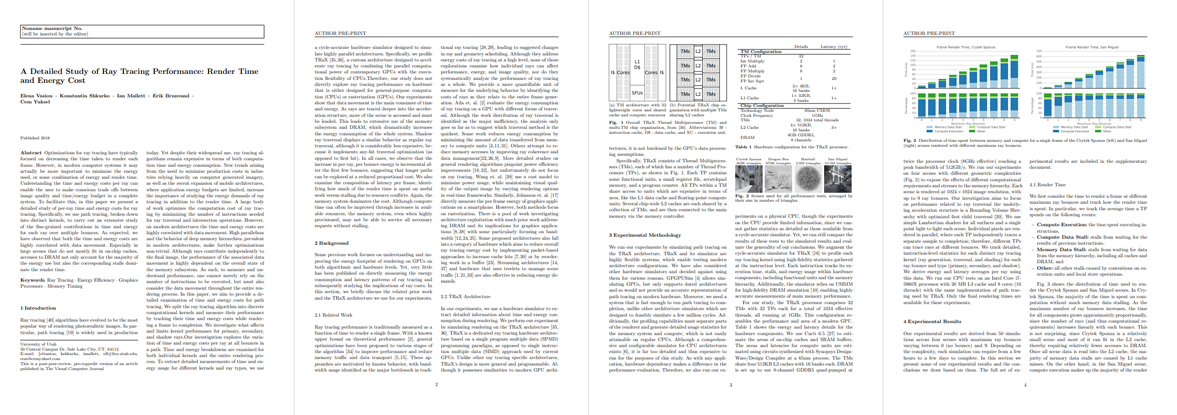A Detailed Study of Ray Tracing Performance: Render Time and Energy Cost
Elena Vasiou, Konstantin Shkurko, Ian Mallett, Erik Brunvand, and Cem Yuksel
In The Visual Computer (Proceedings of CGI 2018), 2018

Abstract
Optimizations for ray tracing have typically focused on decreasing the time taken to render each frame. However, in modern computer systems it may actually be more important to minimize the energy used, or some combination of energy and render time. Understanding the time and energy costs per ray can enable the user to make conscious trade offs between image quality and time/energy budget in a complete system. To facilitate this, in this paper we present a detailed study of per-ray time and energy costs for ray tracing. Specifically, we use path tracing, broken down into distinct kernels, to carry out an extensive study of the fine-grained contributions in time and energy for each ray over multiple bounces. As expected, we have observed that both the time and energy costs are highly correlated with data movement. Especially in large scenes that do not mostly fit in on-chip caches, accesses to DRAM not only account for the majority of the energy use but also the corresponding stalls dominate the render time.
BibTeX
@article{Vasiou:2018:rtEnergy,
author = {Elena Vasiou and Konstantin Shkurko and Ian Mallett and Erik Brunvand and Cem Yuksel},
title = {A Detailed Study of Ray Tracing Performance: Render Time and Energy Cost},
journal = {The Visual Computer (Proceedings of CGI 2018)},
issue_date = {June 2018},
volume = {34},
number = {6-8},
month = jun,
year = {2018},
issn = {0178-2789},
pages = {875--885},
numpages = {11},
url = {https://doi.org/10.1007/s00371-018-1532-8},
doi = {10.1007/s00371-018-1532-8},
acmid = {3231419},
publisher = {Springer-Verlag},
address = {Berlin, Heidelberg},
}Acknowledgements
This material is supported in part by the National Science Foundation under Grant No. 1409129. Crytek Sponza is from Frank Meinl at Crytek and Marko Dabrovic, Dragon is from the Stanford Computer Graphics Laboratory, Hairball is from Samuli Laine, and San Miguel is from Guillermo Leal Laguno.